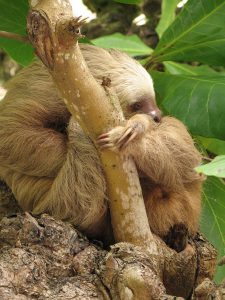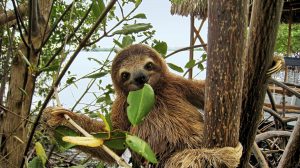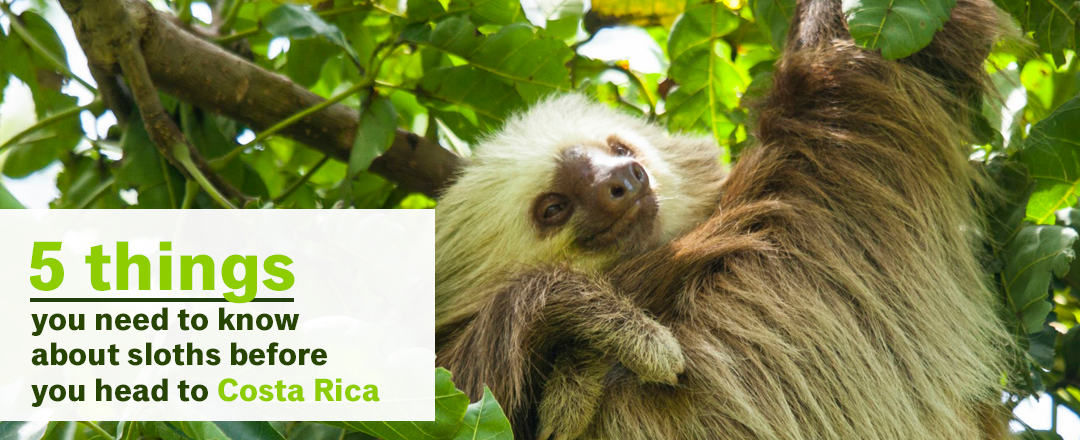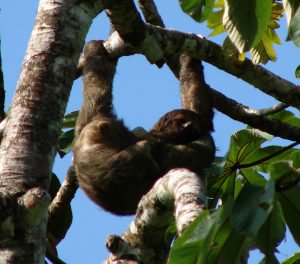If this is how you react to seeing a sloth, Costa Rica might be the place for you. The country is home to two species of the smiley critter, the three-toed brown-throated sloth and Hottman’s two-toed sloth, so it’s the perfect destination for sloth enthusiasts.
If the thought of spotting a sloth in one of Costa Rica’s national parks doesn’t give you feels, though, we can probably change your mind with a few pics and fun facts.
Here are five furry facts about sloths that will make you excited to head to beautiful Costa Rica:

- They’re always hanging around
Famous for having two or three sharp, curved claws at the end of each of their long limbs, sloths spend much of their time hanging upside down in trees. They often fall asleep upside down, and can even remain in that position after they die.
The claws make it hard for them to walk on the ground, but also provide them with a (quite painful) defense against any potential predators.
The takeaway? If you’re looking for sloths in Costa Rica, the place to look is up.
- They live up to their name
It’s true that sloths are named after one of the seven deadly sins (sloth, meaning laziness). And it’s true that they do everything very, very slowly: they don’t move quickly, have very low muscle mass, and have very slow metabolisms.

That’s partially because of their diet. Sloths are folivores, meaning they subsist primarily off leaves, which are low in calories and slow to digest. Digesting just one meal can take a sloth up to a month.
Over the years this had made them the butt of every slowpoke joke, but they don’t seem to mind, do they?
Even though they spend most of their time up in trees, they do take a dip once in awhile to cool off. In fact, some extinct species of sloth were primarily aquatic animals.
Today’s sloths are surprisingly good at swimming: They can hold their breath for up to 40 minutes and can reach speeds of up to 45 feet per minute in the water.
Don’t expect to get a pic of a swimming sloth, though: They don’t do it very often.
- They’re not nearly as big as they used to be (thankfully)
There are six extant (or, currently existing) species of sloth, and they’re all about the size of a medium-sized dog. Go back far enough, though, and you’ll find sloths as big as elephants roaming North America.
These massive ground sloths weighed up to four metric tons and were up to 20 feet tall. They went extinct about 10,000 years ago, probably due to human hunters eradicating them.
That doesn’t mean you can’t see them, though: A few early sloth fossils can be found on display in museums.
- They hold their own
Despite being some of the slowest animals in the rainforest, sloths don’t often encounter their biggest threats, jaguars and eagles. That’s because they’re surprisingly elusive: their slowness makes them hard to spot.
In addition, they tend to blend in with the green rainforest due to their symbiotic relationship with algae, which grows on their fur.
Which brings us to our final tip for spotting sloths: Look hard, and don’t be surprised if you see one with a slight green tint.
If you’re still not in love with sloths, here’s a baby one making little noises with its little face. Now, go check out our tours to Costa Rica to get your own sloth pics.


